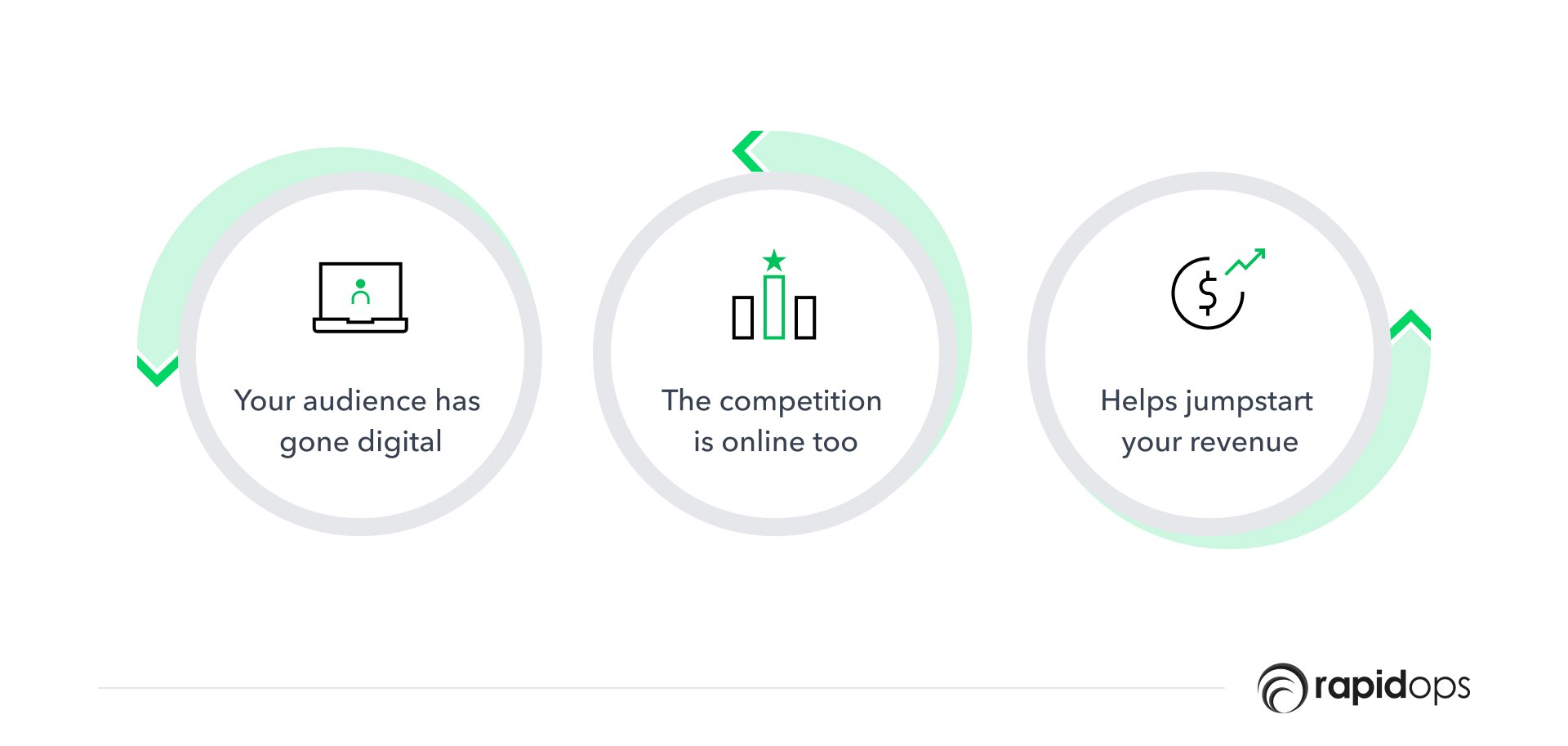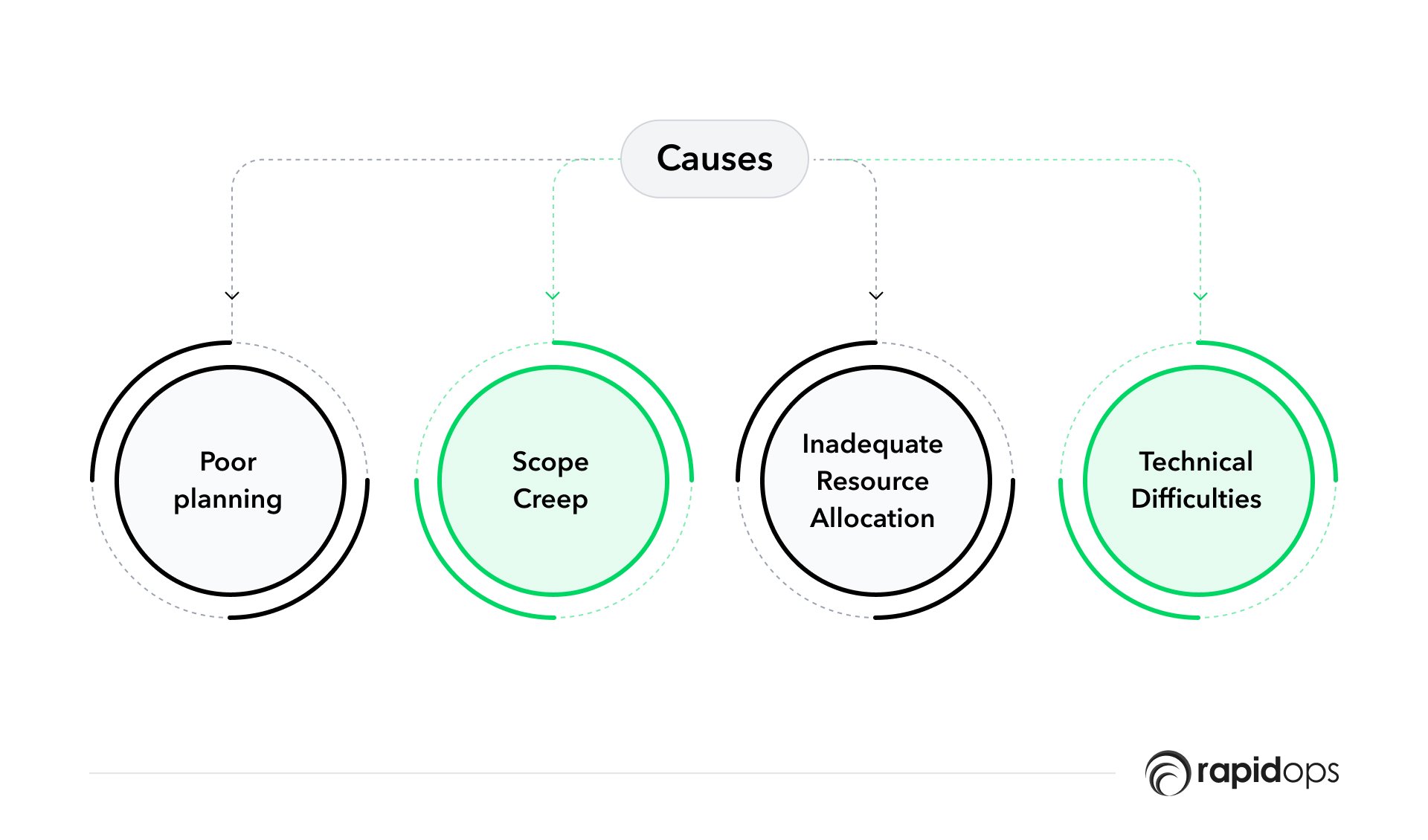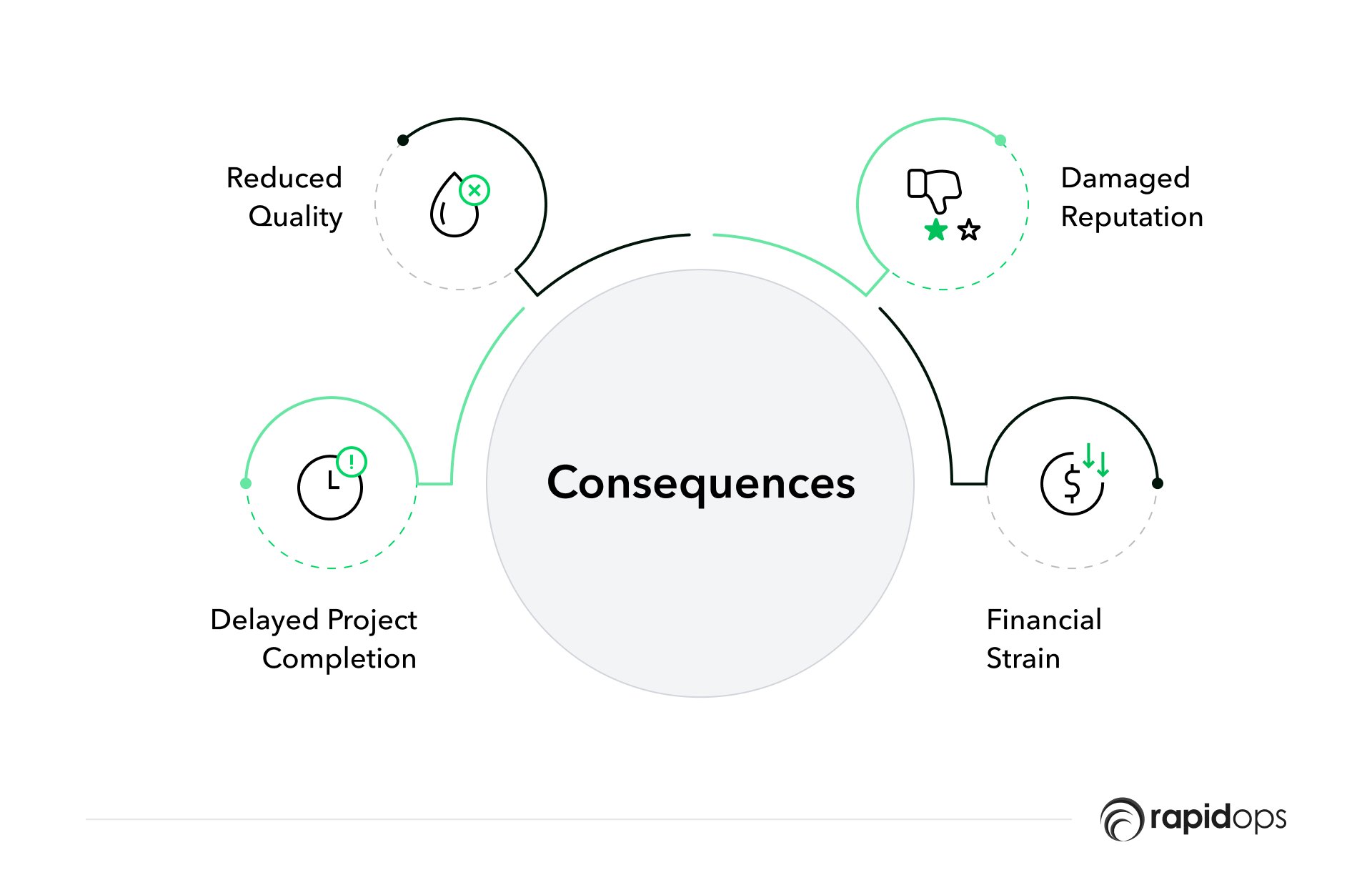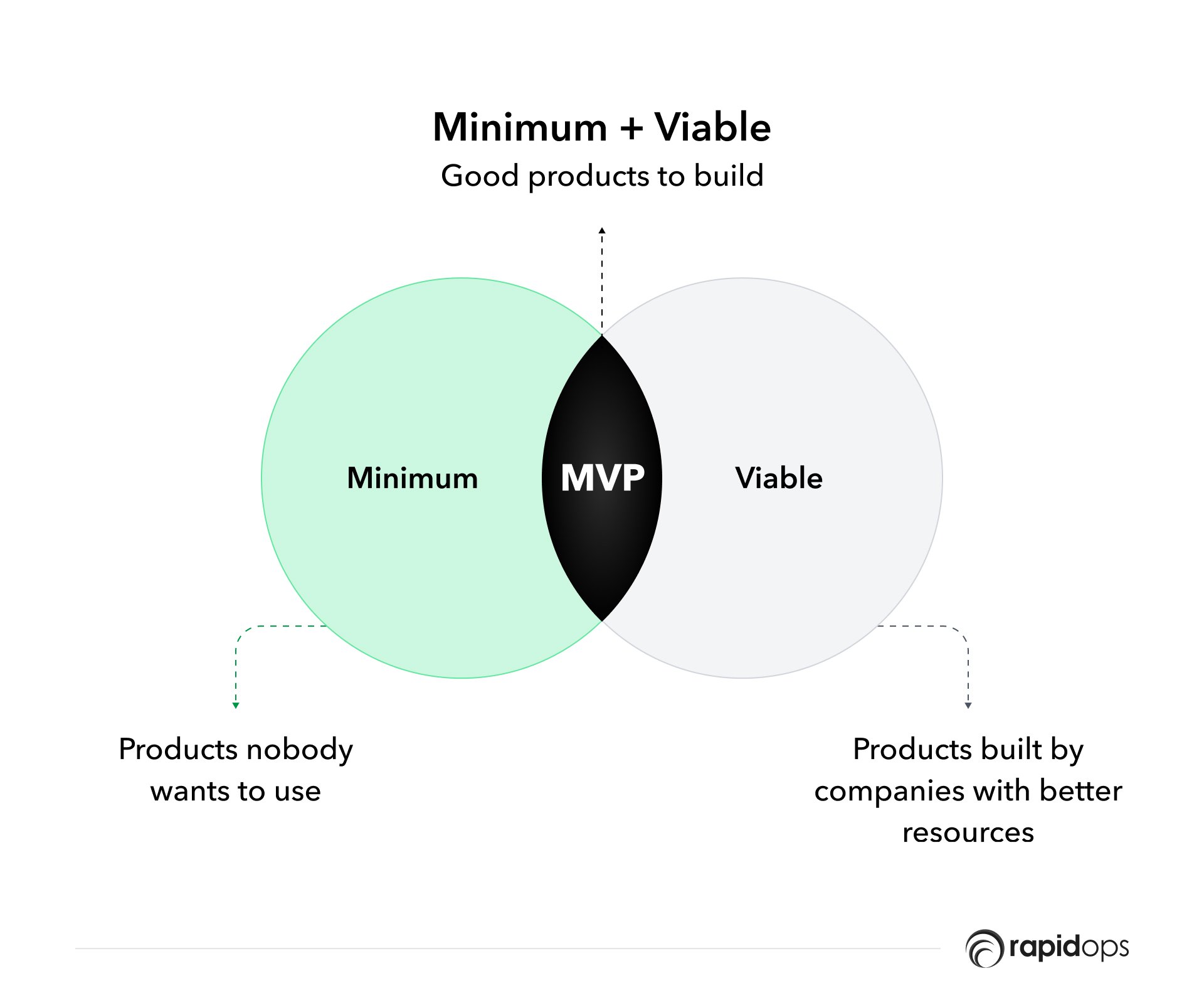Digital product development can be an exciting journey, taking an idea and turning it into a revolutionary product that has the potential to change the world as we know it. However, the cost of creating and launching such a product can quickly drain your entire budget, leaving little to no room for other crucial business expenses.
Does this challenge sound familiar? If yes, then you are not alone. Many entrepreneurs and business leaders struggle with the same issue.
Fortunately, with the right approach and strategy, it's possible to develop cost-effective digital products that save you money and offer great value to your customers.
In this article, we'll explore some practical tips and best practices for cost-effective digital product development that can help you turn your ideas into reality without breaking the bank.
Why embracing digital product development is critical for businesses, now more than ever!
Embracing digital product development has become increasingly crucial for organizations in recent years. While it's not a new approach, many businesses have yet to adopt it fully. So why is now the time to transition to agile frameworks for product development?

Let's take a closer look at why organizations must consider digital product development.
1. Your audience has gone digital
One of the most significant advantages of digital product development is that it allows companies to respond quickly to user input.
Traditional development processes can be slow and unresponsive, leading to user dissatisfaction. Continuous improvement of products is critical to keeping users happy and satisfied.
Staying relevant and in sync with user needs is crucial for any successful company. With the high expectations of users around personalization and tailored solutions, it's vital to promptly meet new demands, which is only possible with digital product development.
2. Competition has taken the path of digitalization
Another crucial reason businesses must consider digital product development is that their competitors already do it. In today's highly competitive landscape, it's vital to remain ahead of the curve and not let the competition out-innovate you and take over your market share.
With new upstarts entering industries daily, most are leveraging digital product development to gain an advantage. If you lag, they will become more attractive to your customers.
To sustain your competitive edge, you must be the first to market with updates or new technologies, achievable through digital product development.
3. It helps boost business revenue
Launching or improving a new product in an uncertain economic climate is also essential for businesses. The push to deploy is urgent, primarily if it fulfills a specific new need caused by business-altering impacts like the pandemic.
Various industries, such as dining, hospitality, education, and retail, have made pivots to meet unique needs and find new revenue streams.
Digital product development is faster and more amiable in getting products to market, which is crucial when businesses need to jumpstart their revenue.
While these reasons suggest urgency, introducing digital product development into an organization requires a framework of processes and a strategic approach. It's essential to approach this transition with careful planning using digital planners and implementation to ensure its success.
If you're looking to kickstart the journey to a successful digital product, our free, editable digital product strategy template is a must-have. With a little planning and effort, you can create a digital product that your target market loves, we have just created something that can help you nudge the process.
[digital_product_strategy_template]
The pitfalls of traditional digital product development

Here are some common pitfalls of conventional digital product development:
1. Slow development processes
Traditional development processes are often slow and lack responsiveness. This can lead to a loss of user interest, missed opportunities, and increased costs.
2. Limited flexibility
Traditional product development often involves a rigid plan with little room for change. This can lead to an inability to adapt to changing user needs or market conditions, harming the product's success.
3. Lack of collaboration
Traditional development processes often operate in silos, with little collaboration between teams. This can lead to missed opportunities, miscommunication, and a lack of accountability.
4. Inefficient use of resources
Traditional development processes can be wasteful, with resources often misallocated or underutilized. This can result in increased costs, delays, and lower-quality products.
5. Limited user input
Traditional development processes often lack sufficient user input and feedback, resulting in products that do not meet users' expectations.
6. Lack of agility
Traditional development processes are often inflexible, with little room for experimentation or adaptation. This can lead to missed opportunities and an inability to respond to changing market conditions.
7. Inadequate testing
Traditional development processes often have limited testing, resulting in products that may have significant bugs or errors. This leads to the development of half-baked products that neither help the customers nor bring ROI for the business.
Cost overruns: The poison ivy of digital product development
Cost overruns are a common issue in digital product development projects. Despite best efforts, it's not uncommon for these projects to exceed their budgets, causing a range of issues for the organization involved.
Here are some common causes and consequences of cost overruns in digital product development:
Causes of cost overruns:

1. Poor planning
A lack of detailed planning at the outset of a project can lead to unforeseen expenses down the line. It's essential to establish a detailed roadmap, including timelines, milestones, and costs.
2. Scope creep
Changes to the scope of a project, either through additional features or requirements, can lead to additional costs that were not initially accounted for.
3. Inadequate resource allocation
Not having the right people or resources in place to execute a project can lead to delays, inefficiencies, and additional costs.
4. Technical difficulties
Technical challenges and obstacles can lead to increased costs. Finding solutions to unexpected technical issues can require additional time and resources.
Consequences of cost overruns:

1. Delayed project completion
Cost overruns can lead to delays in the completion of the project, which can cause frustration and dissatisfaction among stakeholders.
2. Reduced quality
Cutting corners or making sacrifices to stay within budget can lead to reduced quality in the final product.
3. Damaged reputation
A failed, or poorly executed project can damage the reputation of the organization involved, leading to a loss of trust and confidence from stakeholders.
4. Financial strain
Cost overruns can cause significant financial strain on an organization, leading to decreased profitability, increased debt, or even bankruptcy in extreme cases.
To mitigate the risks associated with cost overruns, it's essential to establish a thorough project plan, set realistic budgets and timelines, and allocate resources effectively.
Additionally, regular communication with stakeholders and a willingness to adjust plans as needed can help to avoid costly surprises down the line.
Business owners must ensure they set the right priorities before developing a digital product strategy to avoid these pitfalls.
At Rapidops, we understand the complexities involved in digital product development, and we are here to help your business navigate these challenges effectively. With our expert services, we can provide you with a streamlined and efficient development process, ensuring a successful start to your app idea.
How can businesses plan their next digital product development in a cost-effective manner?
Here are some tips that will help you plan a cost-effective digital product development plan.

1. Define your goals
Before starting any digital product development project, it's crucial to define what you want to achieve. Are you looking to solve a particular problem or create a new market opportunity? Having clear goals will help you stay focused throughout the development process.
2. Research your market
Conducting market research is essential to understand your target audience, their needs, and the competition. This research should include customer surveys, competitor analysis, and trend analysis to gain a comprehensive understanding of the market landscape.
3. Create a detailed plan
A comprehensive plan is necessary to guide the digital product development process. It should include the scope of the project, timeline, milestones, resources, and budget. Having a plan in place will help you stay on track and ensure that you meet your project goals.
4. Prioritize features
Prioritizing features is crucial to ensure that your digital product meets the needs of your target audience. You should identify the most critical features and functionalities that will have the most significant impact on the user experience and help you achieve your project goals.
5. Build a prototype
Building a prototype of your digital product is essential to test its functionality and validate its usability. This step will help you identify any potential issues early in the development process and make necessary adjustments.
6. Iterate and refine
Continuous refinement of your digital product based on feedback and data is essential to ensure that it meets the needs of your target audience. You should gather feedback from users and stakeholders and use this feedback to make necessary changes to the product.
7. Test and launch
Thorough testing is necessary to ensure that your digital product is bug-free and meets quality standards before launching it to the market. You should conduct comprehensive testing to identify any potential issues and ensure that your product is ready for launch.
8. Measure and optimize
Once your digital product is launched, you should track key metrics such as user engagement, conversion rates, and customer feedback to identify areas of improvement. These metrics will help you optimize your product over time and ensure that it continues to meet the needs of your target audience.
Bonus tip: Having an MVP (minimum viable product)!

Embracing the concept of a minimum viable product (MVP) is a game-changer in achieving cost-effective digital product development.
By focusing on building a lean version of your product with only the essential features, you can quickly validate its potential in the market, gather valuable user feedback, and make informed decisions about its future development.
This approach allows you to allocate resources efficiently, minimize upfront investment, and reduce the risk of overspending on features that may not resonate with your target audience.
With an MVP, you can streamline the development process, save costs, and accelerate your product's time-to-market, all while ensuring you deliver a top-notch digital experience.
FAQs related to digital product development
1. How can I strike a balance between keeping development expenses low and delivering a top-notch digital product?
To balance development costs and quality, prioritize core features, adopt agile methodologies, and create an efficient plan. Focus on essential functionality and streamline communication between stakeholders for a smooth project flow.
2. What are the most effective tactics for maximizing resource efficiency during the digital product development process?
Boost resource efficiency in digital development by:
- Crafting a clear project roadmap
- Employing management tools for tracking and transparency
- Fostering collaboration among team members
- Adjusting resource allocation based on project needs
3. How can I harness the power of open-source resources to reduce expenses in digital product creation?
Cut costs in digital product creation with open-source resources by:
- Using open-source frameworks and libraries
- Employing open-source tools for management and collaboration
- Engaging in open-source communities for updates and best practices
- Replacing expensive proprietary solutions with open-source alternatives
4. What is the significance of iterative prototyping in the pursuit of budget-friendly digital product development?
Iterative prototyping in budget-friendly digital product development helps by:
- Validating ideas early
- Gathering user and stakeholder feedback
- Identifying issues before investing heavily
- Reducing redesign costs through multiple iterations
5. How can selecting the right outsourcing partners and development team enhance cost-effectiveness in digital product development?
Enhance cost-effectiveness in digital product development by:
- Accessing a wider talent pool
- Reducing overhead costs
- Gaining flexibility in team scaling
- Leveraging partner's experience for process optimization
6. Is digital product strategy part of digital product development?
Yes, digital product strategy is an integral part of digital product development. A well-crafted digital product strategy provides a clear direction and roadmap for the development process. It ensures that the product aligns with the company's objectives, target audience, and market needs.
A solid digital product strategy can also help identify opportunities for innovation, minimize risks, and optimize resources throughout the development process.
Concluding thoughts
Cost-effectiveness is always an important consideration when it comes to digital product development. However, it's also crucial to balance cost-effectiveness with quality, innovation, and user experience.
Traditional development processes can be slow, inflexible, and lack collaboration, leading to missed opportunities, miscommunication, and decreased user satisfaction. Therefore, we offer a range of solutions tailored to your unique needs, including detailed planning, agile development, user-centered design, effective collaboration, and robust testing.
To counter cost overruns, we work with you to set realistic budgets and timelines, allocate resources effectively and communicate regularly to avoid any costly surprises.
And the substantial work we have put out in the world for the past 13 years is testament to our belief in an uncompromised work ethic of giving the best to our clients. Contact us today to learn more about how we can assist you with your digital product development needs.

Saptarshi Das
Content Editor
9+ years of expertise in content marketing, SEO, and SERP research. Creates informative, engaging content to achieve marketing goals. Empathetic approach and deep understanding of target audience needs. Expert in SEO optimization for maximum visibility. Your ideal content marketing strategist.
What’s Inside
- Why embracing digital product development is critical for businesses, now more than ever!
- The pitfalls of traditional digital product development
- Cost overruns: The poison ivy of digital product development
- How can businesses plan their next digital product development in a cost-effective manner?
- FAQs related to digital product development
- Concluding thoughts

Let’s build the next big thing!
Share your ideas and vision with us to explore your digital opportunities
Similar Stories
- Strategy
- undefined Mins
- February 2017

- Strategy
- 19 Mins
- August 2023


Receive articles like this in your mailbox
Sign up to get weekly insights & inspiration in your inbox.

